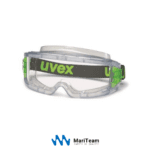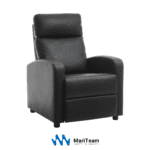SOLAS Retro-reflective Tape
Length: 45,72m
Width: 50mm
SOLAS Retro-reflective Tape: TYPE II
SOLAS Retro-reflective Type II tapes are extensively employed in the maritime and offshore industries to enhance safety measures on ships and support search and rescue operations. These high- performance tapes are commonly applied to life-saving equipment, including lifeboats, rescue boats, liferafts, lifejackets, immersion suits, and other essential safety gear. The Type II requirements include withstanding 1500 hours of accelerated weathering. Therefore, by affixing Type II tapes to the equipment, they become highly visible in the water, significantly aiding rescue personnel in their life- saving efforts. How to apply SOLAS retro-reflective tape?
Applying SOLAS retro-reflective tape requires following specific guidelines to ensure optimal performance. Here are the recommended steps for application:
Surface Preparation
Consider all surfaces on which SOLAS Retro-reflective Tape will be installed as contaminated. Prior to application, thoroughly clean and degrease the surfaces, avoiding touching these surfaces with bare fingers. Clean the surface in circular movements with a residue-free paper or cloth. Then, apply a second dosage of the degreasing solution and clean the surface with movements in a single direction. Allow the surface to dry for 2 to 3 minutes, ensuring all cleaning solution evaporates.
Product application
After preparing the surface, begin by removing the protective paper from the SOLAS Retro-reflective Tape, starting from one corner without touching the adhesive side of the tape. Carefully apply the tape to the previously prepared surface, taking care to avoid the formation of bubbles. Start from one end and gradually move along, exerting pressure evenly throughout the entire area of the tape. Using a roller can help distribute forces throughout the surface, ensuring a strong and uniform adhesion.
The application should be made at room temperature not less than +10ºC. Once applied, at the recommended application temperature, possible temperature changes are generally well tolerated by the glue, without modifying the adhesion properties of the glue.
What is SOLAS Tape?
SOLAS is a designation that stands for "Safety Of Life At Sea”. The SOLAS Convention is an international maritime treaty that sets minimum safety standards for ships, equipment and operations.
SOLAS reflective Tape, also known as SOLAS retro-reflective tape, is a specialized type of adhesive tape, used in the maritime and offshore industries, designed to improve visibility and enhance safety, especially in low-lighting conditions or during emergencies.
How does Retroreflective Tape work?
Retro-reflective tape operates by reflecting light back to its source. By bending and refracting light in a manner that directs it back along its original path, these tapes ensure that observers can see the reflected light when their eyes align with the light source. This reflective mechanism significantly enhances visibility, allowing a clearer identification, even in challenging lighting situations.
What is the difference between Type I and Type II tape?
Understanding the difference between Type I and Type II reflective tapes is crucial when choosing the right tape for your specific application.
Type I tapes are specifically designed for indoor use. They are not intended to withstand outdoor conditions and may degrade when exposed to harsh weather elements. Over time, Type I tapes tend to lose their colour and may not provide optimal visibility. Therefore, they are best suited for indoor environments where exposure to the elements is minimal. On the other hand, Type II tapes are engineered to be used in both indoor and outdoor settings. These tapes offer superior material quality and durability, ensuring long-lasting performance even in extreme weather conditions. Type II tapes are designed to endure continuous outdoor exposure, making them ideal for maritime and offshore applications where visibility is crucial across diverse environments.
The IMO Resolution MSC.481(102), adopted on 9 November 2020, establishes the minimum requirements for Type I and Type II. The retro-reflective materials should be such as will meet the minimum technical specification given in annex 2 for Type I and Type II.






